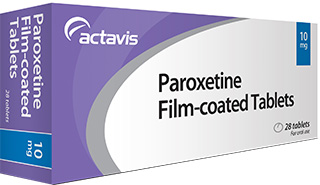Pharmacological Classification
Paroxetine is classified as a selective serotonin reuptake inhibitor (SSRI). SSRIs are a class of drugs that predominantly affect serotonin levels in the brain, a neurotransmitter associated with mood regulation. By preventing the reuptake of serotonin, Paroxetine increases its availability in the synaptic cleft, which helps alleviate symptoms of depression and anxiety disorders. Paroxetine is extensively used as an antidepressant.
Available Formulations
Paroxetine is obtainable in several formulations including immediate-release tablets, extended-release tablets, oral suspensions, and controlled-release tablets. These variations allow for flexible treatment regimens tailored to individual patient needs. The availability of multiple formulations provides options for dose adjustments and reducing side effects, enhancing patient adherence.
Mechanism of Action
Paroxetine functions by inhibiting the serotonin transporter (SERT), which is responsible for the reuptake of serotonin from the synaptic cleft back into the presynaptic neuron. This inhibition increases serotonin levels in the brain, contributing to its antidepressant properties. Unlike other antidepressants, Paroxetine has minimal affinity for adrenergic, histamine, or muscarinic receptors, which limits its side effect profile.
Indications for Use
Paroxetine is indicated for the treatment of major depressive disorder (MDD), obsessive-compulsive disorder (OCD), panic disorder, social anxiety disorder (SAD), generalized anxiety disorder (GAD), and post-traumatic stress disorder (PTSD). Additionally, it is prescribed for premenstrual dysphoric disorder (PMDD) and certain cases of chronic headache.
Dosing Guidelines
Dosing varies based on the condition being treated. For major depressive disorder, the typical starting dose is 20 mg per day, with gradual adjustments depending on therapeutic response and tolerability. For panic disorder, a lower initial dose of 10 mg per day is recommended to minimize side effects. Adjustments are made by healthcare professionals based on patient response and tolerability.
Pharmacokinetics and Metabolism
Paroxetine is well-absorbed following oral administration and exhibits significant first-pass metabolism. It is extensively metabolized in the liver via the cytochrome P450 system, particularly CYP2D6, into inactive metabolites. The drug has a variable half-life of approximately 24 hours, facilitating once-daily dosing. Steady-state concentrations are achieved within 7 to 14 days of consistent dosing.
Contraindications and Precautions
Paroxetine is contraindicated in patients taking monoamine oxidase inhibitors (MAOIs) due to the risk of serotonin syndrome. It should not be administered concurrently with pimozide or thioridazine due to QT prolongation risks. Careful consideration is required in patients with a history of bipolar disorder, as Paroxetine may induce manic episodes.
Drug Interactions
Paroxetine has significant interactions with other serotoninergic drugs, including other SSRIs, SNRIs, and triptans, elevating the risk of serotonin syndrome. It can inhibit the metabolism of drugs metabolized by CYP2D6, affecting their plasma concentrations. Co-administration with warfarin may affect INR and bleeding risk due to protein binding displacement.
Side Effects Profile
Common side effects include nausea, somnolence, dizziness, insomnia, constipation, and sexual dysfunction. These effects are generally mild to moderate and often diminish with continued use. More serious side effects include increased risk of fractures and potential withdrawal symptoms upon abrupt discontinuation. Monitoring by healthcare professionals is advised to manage these risks.
Adjustments and Special Populations
Paroxetine dosage must be adjusted in patients with hepatic and renal impairment due to altered drug clearance. Elderly patients might require lower starting doses because of increased sensitivity to the drug. Pregnant and lactating women should use caution as Paroxetine may associate with fetal risks, and it is excreted in breast milk.







Reviews
There are no reviews yet.